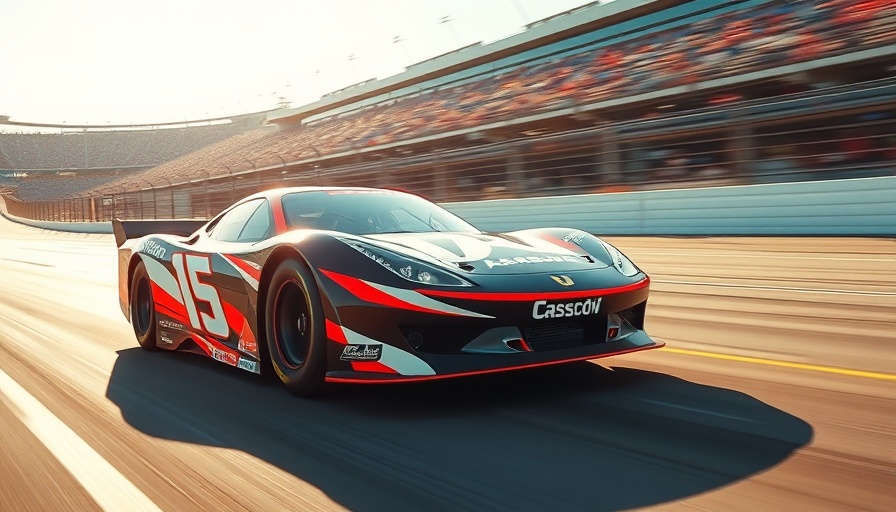
Kyle Larson Makes Dominant Showing at Bristol
This past weekend at Bristol Motor Speedway, Kyle Larson's performance in the NASCAR Cup Series was nothing short of spectacular. After clinching a victory on Saturday, he followed up with another win on Sunday, solidifying his prowess on the track. Larson's average finish from the three races was an outstanding 1.33, leading a remarkable 688 laps across both the Xfinity Series and the Cup Series. This performance not only showcased Larson's skills but also ended Denny Hamlin's winning streak, denying him a chance to match his teammate Christopher Bell's earlier three wins.
The Risks of Strategy in NASCAR
During Sunday’s race, the strategy played a crucial role in determining the outcome. As the race progressed, a few drivers attempted to extend their runs, hoping to catch a caution. Ryan Blaney, racing for Team Penske, notably held on longer than anyone else, with his tires nearly 60 laps older than the competition. When he eventually pitted with under 50 laps to go, his strategy allowed him to avoid going a lap down, and he climbed from ninth to sixth by race's end. This decision highlights the delicate balance of risk and reward in NASCAR, where timing and tactics can dictate success.
Emotional Moments and Celebrations
For Larson, winning at Bristol felt overwhelmingly rewarding, especially after narrowly missing a three-race sweep. The celebration was bittersweet; achieving victory while simultaneously yearning for the elusive sweep resonated deeply with him. However, Larson's joy in defeating Hamlin, a prominent rival in the sport, added to the thrill of the moment. Larson's ability to perform consistently and strategically in such a high-pressure environment underscores his evolving competency as a driver.
The Bigger Picture: NASCAR Trends and Insights
As we analyze Larson's recent successes, it’s essential to view this shift within the larger context of NASCAR's competitive landscape. The race featured only one non-stage caution, demonstrating a trend towards longer green flag runs which could reflect improvements in car reliability and driver skill. This aspect promises to usher in exciting races that challenge both drivers and their teams to up their strategy game. The recent performances signal a tightening of competition, where every lap counts and consistency becomes a critical factor for championship contenders.
What It Means for Denny Hamlin and the Competition
Although Hamlin experienced a setback at Bristol, this race serves as a reminder that the competition in the NASCAR Cup Series is fierce. With teams continuously adapting their strategies and technologies, drivers like Larson are maintaining a lead while others strategize their comeback. For Hamlin, regrouping and recalibrating after this loss is vital if he hopes to reclaim his competitive edge. As the season progresses, watching how both drivers and teams respond to such pressures will be crucial to understanding the overarching dynamics of NASCAR.
In conclusion, Kyle Larson's double victory this weekend at Bristol marks a pivotal moment in the NASCAR season. Observers should keep a close eye on upcoming races to witness how these strategies evolve in real time. For fans and enthusiasts, understanding the intricate dance of risk, skill, and strategy in NASCAR offers a richer viewing experience as the season unfolds.
 Add Row
Add Row  Add
Add 




 Add Row
Add Row  Add
Add 

Write A Comment